Why Basement Storage Deserves a Strategy
Basements face unique challenges: humidity, limited light, and oddly shaped layouts. A well-planned storage system tackles all three while keeping the space attractive and functional — not like a warehouse.
| Problem | Storage Solution |
|---|---|
| Moisture Risk | Use sealed bins, metal shelving, and dehumidifiers. |
| Awkward Layouts | Custom cabinetry or modular shelving to fit tight corners. |
| Limited Light | Use light finishes and reflective surfaces to brighten storage zones. |
| Unfinished Walls | Add insulated panels, pegboards, or wall tracks to mount storage safely. |
1. Built-In Wall Storage
When it comes to basement organization, built-in wall storage is a game-changer.
Instead of letting your walls sit bare, turn them into sleek, space-saving storage that blends seamlessly with your overall design.
From seasonal décor to sports equipment, custom shelves or cabinetry keep everything organized without eating into valuable floor space.
| Feature | Benefit | Design Tip |
|---|---|---|
| Floor-to-Ceiling Shelving | Maximizes storage capacity without taking up floor space. | Add upper cabinet lighting or trim molding for a built-in furniture feel. |
| Closed Cabinetry | Hides clutter and keeps stored items dust-free. | Choose shaker-style or flat-front panels to match your basement finish. |
| Adjustable Shelves | Adapts easily to changing storage needs and item sizes. | Use metal brackets or adjustable peg systems for durability and flexibility. |
- Floor-to-ceiling shelving: Take advantage of every inch of wall height for maximum storage efficiency.
- Closed cabinetry: Keeps things tidy and visually clean, especially in finished basements.
- Adjustable shelves: Easily reconfigure shelf spacing for bulky items or seasonal bins.
Pro Tip: Use moisture-resistant MDF or plywood coated with a durable, washable finish to protect against basement humidity and everyday wear.
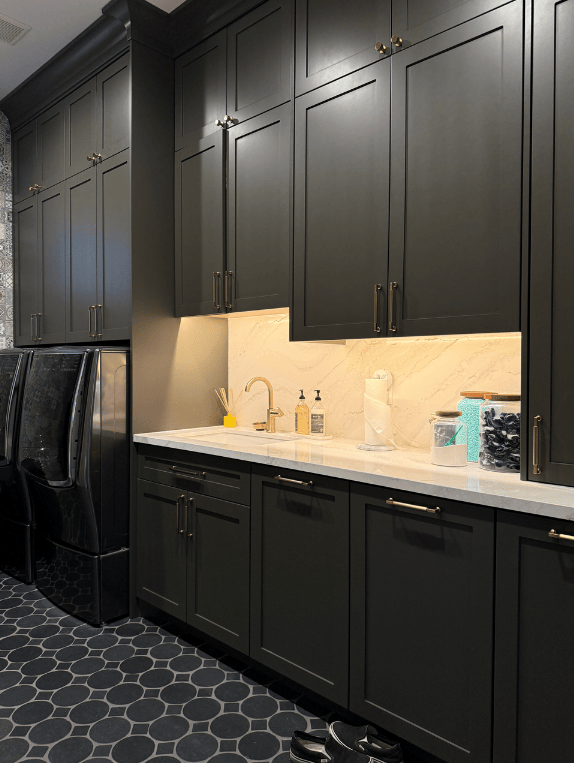
2. Under-Stair Storage
Don’t underestimate the potential of the space under your basement stairs — it’s one of the most overlooked yet valuable areas in the home.
Custom under-stair storage can transform an awkward nook into a practical and stylish feature that fits your exact needs, from hidden drawers to display wine racks.
| Storage Option | Best Use | Design Tip |
|---|---|---|
| Pull-Out Drawers | Perfect for shoes, sports equipment, or tool storage. | Install heavy-duty drawer slides for smooth operation and long-term use. |
| Mini Wine Rack | Adds elegance and function in finished basements or entertainment zones. | Backlight with LED strips for a subtle, high-end glow. |
| Cabinet Doors or Sliding Panels | Keeps stored items out of sight and maintains visual harmony. | Match paint or wood finish to your basement flooring or trim for a cohesive look. |
- Pull-out drawers: Make smart use of every inch — great for hiding clutter while keeping essentials close.
- Mini wine rack: Elevates your basement design and doubles as functional décor.
- Cabinet doors or sliding panels: Create a clean, uniform finish while maintaining accessibility.
Pro Tip: Match the finish or stain to your basement’s flooring or wall trim to make the storage look like a built-in architectural feature — not an afterthought.
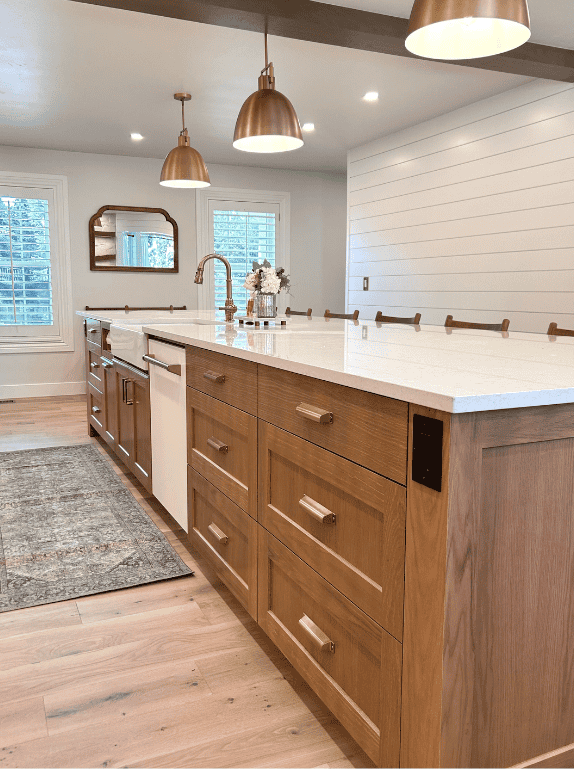
3. Modular Shelving Systems
If flexibility is your priority, modular shelving systems deliver maximum adaptability with minimal effort.
They’re ideal for basements that serve multiple purposes — from home gyms and play areas to workshops and utility zones.
These systems let you rearrange, expand, or downsize as your storage needs change.
| System Type | Ideal For | Design Tip |
|---|---|---|
| Metal Grid or Track Systems | Garage-style storage, tools, and heavy-duty items. | Combine hooks, baskets, and adjustable shelves for a fully customizable layout. |
| Freestanding Cube Shelves | Finished living spaces, playrooms, or family rooms. | Add baskets or bins for a mix of open and concealed storage. |
| Labeled Bins | Organizing small household items, décor, or craft supplies. | Use clear, stackable plastic or acrylic bins for easy visibility and moisture protection. |
- Metal grid or adjustable track systems: Heavy-duty and perfect for garages, tools, or sports equipment.
- Freestanding cube shelves: Add flexibility for finished spaces — ideal for family or rec rooms.
- Labeled bins: Make it easy to find, sort, and maintain order across different categories.
Pro Tip: Skip cardboard boxes — they absorb moisture, sag over time, and attract pests. Opt for plastic or metal bins to keep your basement clean and dry.
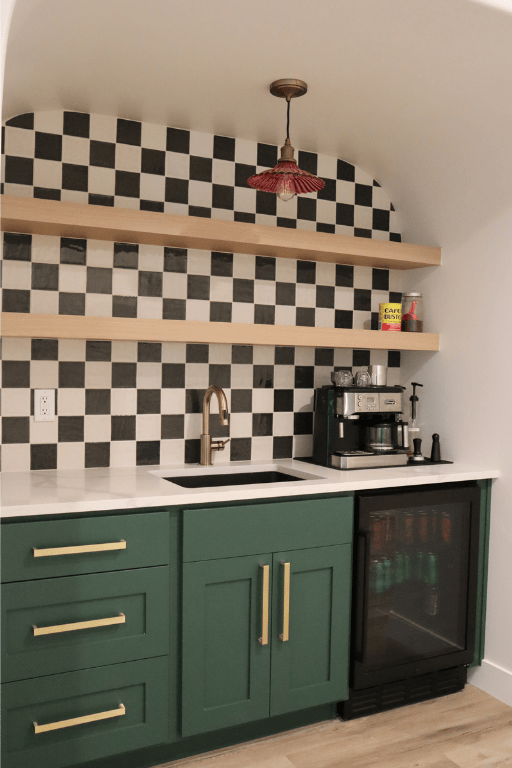
4. Basement Mudroom Zone
If your basement has a door that connects to the garage or backyard, you’ve got the perfect opportunity to create a mini mudroom.
A well-designed mudroom zone helps contain the chaos — muddy shoes, wet coats, sports gear — before it ever reaches your main living spaces.
It also adds everyday convenience, especially for families who use the basement as a secondary entryway.
| Feature | Purpose | Design Tip |
|---|---|---|
| Bench with Cubbies | Provides a convenient spot to sit while removing shoes and extra storage underneath. | Use durable wood or composite materials that can handle moisture from wet footwear. |
| Wall Hooks or Pegboard | Keeps coats, backpacks, and umbrellas off the floor and easy to grab. | Combine decorative hooks with open shelving for a polished, functional look. |
| Durable Flooring | Prevents water damage and makes cleaning effortless. | Choose waterproof vinyl plank, ceramic tile, or sealed concrete for longevity. |
- Bench with cubbies: Combines seating and organized storage for shoes, boots, or bags.
- Wall hooks or pegboard: Keeps outerwear and accessories organized and off the ground.
- Durable flooring: Vinyl plank or tile ensures easy cleaning and long-term durability.
Pro Tip: Add a drain mat near the entry and a sturdy coat rack — they’ll save your flooring and keep moisture in check during rainy or snowy weather.
5. Hidden Storage in Plain Sight
In finished basements, function and aesthetics go hand in hand.
The best storage doesn’t look like storage — it hides in plain sight through smart, multi-functional furniture and built-in design features.
This approach keeps spaces like playrooms, home theaters, and lounges sleek yet practical.
| Storage Type | Ideal Use | Design Tip |
|---|---|---|
| Storage Ottomans & Benches | Perfect for storing blankets, games, or toys in rec and media rooms. | Choose fabric or faux leather finishes that match your seating for a cohesive look. |
| Built-In Window Seats | Adds charm and doubles as hidden storage beneath seating cushions. | Use lift-up lids or drawers for easy access while maintaining aesthetics. |
| Dual-Purpose Furniture | Maximizes utility in smaller spaces without adding visual bulk. | Opt for coffee tables or sideboards with concealed compartments. |
- Storage ottomans and benches: Perfect for playrooms and home theaters where comfort and storage meet.
- Built-in window seats: Create a cozy reading nook with hidden storage beneath.
- Dual-purpose furniture: Smart, space-saving pieces that blend seamlessly into your décor.
Pro Tip: This approach works especially well in basement playrooms or media rooms — where storage should be functional but invisible.
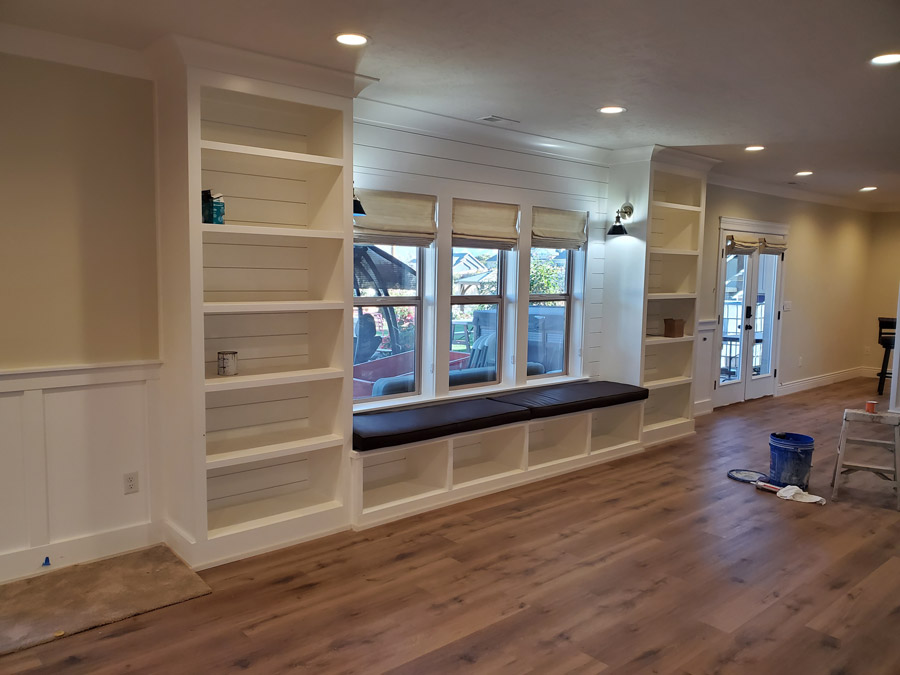
6. Ceiling-Mounted Storage
When floor space is limited, think vertical.
Ceiling-mounted storage is one of the most efficient ways to store large or rarely used items like camping gear, holiday decorations, or luggage.
This strategy is especially useful in unfinished or partially finished basements where aesthetics are secondary to utility.
| Overhead Storage Option | Best Use | Safety Tip |
|---|---|---|
| Metal Ceiling Racks | Ideal for bins, seasonal décor, or camping gear. | Secure into load-bearing joists and use rated hardware for stability. |
| Suspended Shelving | Stores lightweight items while keeping them easily visible. | Avoid hanging over appliances or walkways for safety clearance. |
| Sliding Tote Systems | Keeps containers organized and accessible without a ladder. | Use clear, labeled bins so you can identify contents at a glance. |
- Metal ceiling racks: Heavy-duty and perfect for long-term storage of seasonal items.
- Suspended shelving: Great for maximizing space in utility or workshop areas.
- Sliding tote systems: Smart, accessible storage that keeps the floor clutter-free.
Pro Tip: Always mount racks on load-bearing joists, not drywall — and double-check clearance for lighting, sprinklers, and HVAC vents before installation.
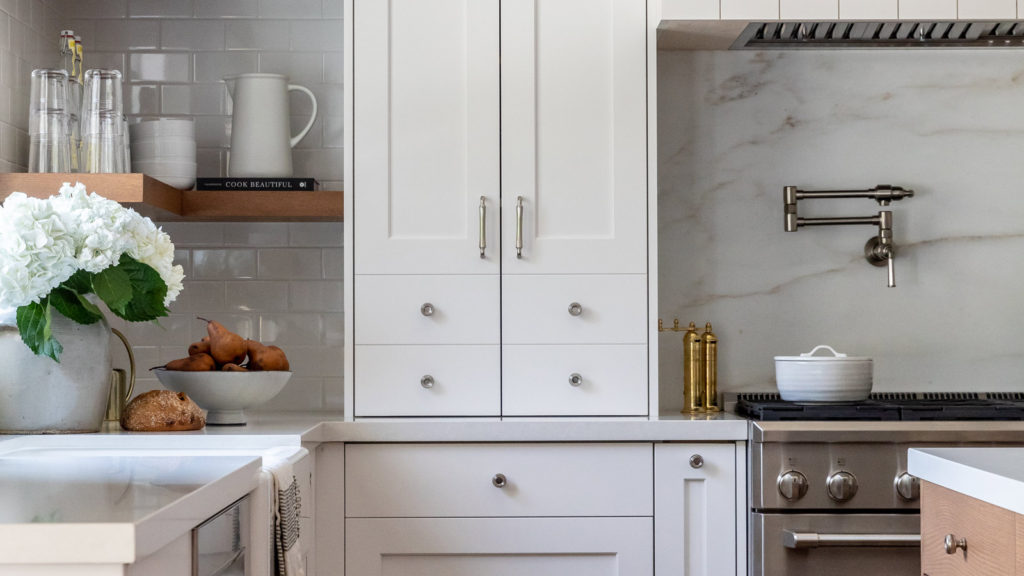
7. Smart Basement Pantry
Running out of kitchen storage? Transform part of your basement into a smart pantry.
This addition can double your food storage capacity while keeping everything neatly organized, cool, and pest-free.
With the right shelving and climate control, your basement pantry becomes a functional, efficient extension of your kitchen — not just a place to stash bulk items.
| Feature | Purpose | Design Tip |
|---|---|---|
| Adjustable Wire Racks | Provide air circulation and easy-to-clean storage for canned and dry goods. | Anchor racks to wall studs for stability, and label shelves by category for easy restocking. |
| Sealed Storage Bins | Protects dry goods, pet food, and grains from pests and humidity. | Opt for stackable, airtight containers made from BPA-free plastic or stainless steel. |
| Dehumidifier | Maintains ideal humidity levels to prevent spoilage or mold growth. | Place near the pantry’s entrance or wall vent to circulate air evenly. |
- Adjustable wire racks: Easy to clean, adaptable, and allow air circulation to prevent mustiness.
- Sealed storage bins: Protect dry ingredients and pet food from moisture or pests.
- Dehumidifier: Keeps the air cool, dry, and food-safe year-round.
Pro Tip: Add LED strip lighting beneath each shelf to eliminate dark corners — you’ll never lose another can in the back again.
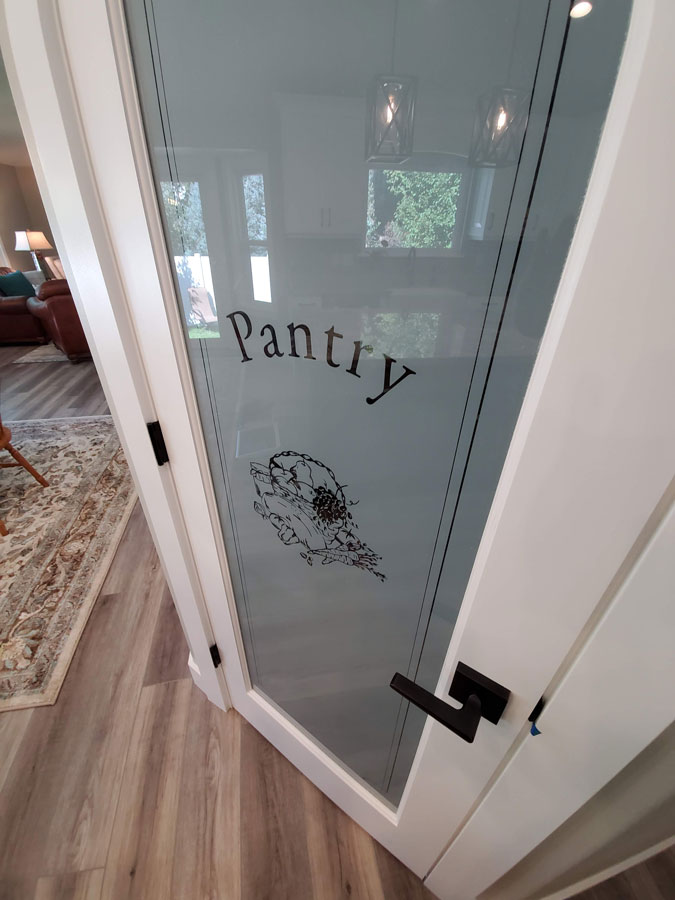
8. Dedicated Hobby or Craft Area
A basement is the perfect spot for creativity. Whether it’s woodworking, painting, sewing, or crafting,
dedicating a small section of your basement to hobbies keeps supplies organized and accessible — without taking over the rest of the home.
The key is structured storage that supports productivity and makes cleanup a breeze.
| Storage Element | Function | Design Tip |
|---|---|---|
| Pegboards for Tools | Keeps tools, scissors, and supplies visible and organized. | Paint or frame the pegboard to complement your basement’s color scheme. |
| Rolling Carts | Adds mobility and flexibility for project-based work. | Choose carts with locking wheels and multiple tiers for better organization. |
| Cabinets with Clear Drawers | Organizes materials by type, size, or color for easy visibility. | Use transparent drawers with labels for a professional, tidy look. |
- Pegboards for tools: Keeps everything visible and in reach, perfect for crafts or home projects.
- Rolling carts: Mobile, multi-purpose storage that adapts to your workflow.
- Cabinets with clear drawers: Ideal for neatly sorting supplies while maintaining easy visibility.
Pro Tip: This setup pairs beautifully next to your home office or laundry area — create a functional work-meets-creativity corner.
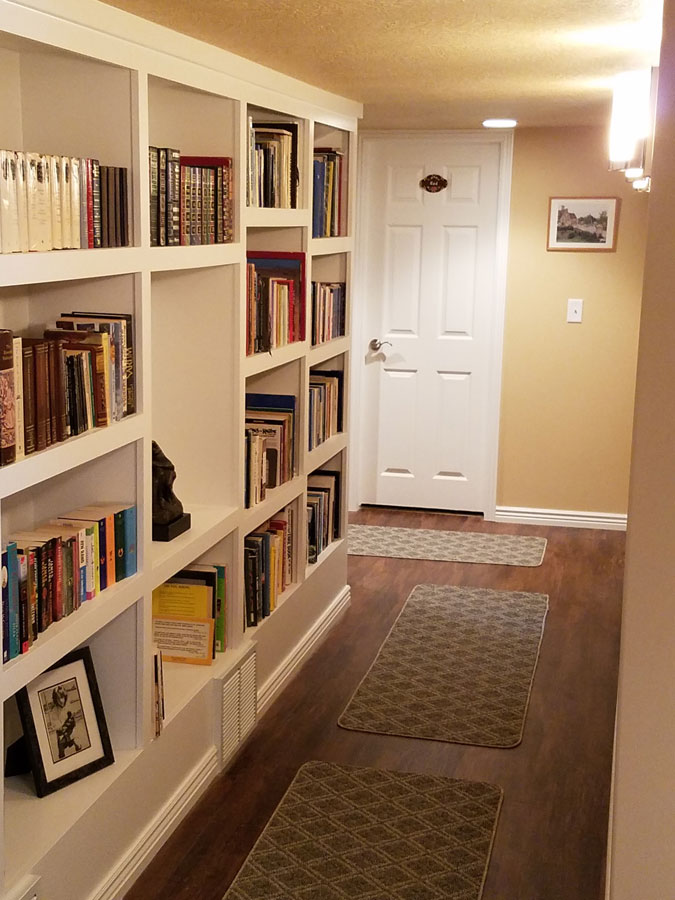
9. Closet Systems & Dividers
Don’t relegate your basement closets to random storage chaos.
With the right shelving, lighting, and organization systems, you can transform them into highly functional zones for linens, décor, or overflow household items.
Adding dividers and doors keeps things contained and visually neat.
| System Type | Best For | Design Tip |
|---|---|---|
| Wire Closet Kits | Affordable and easy to install for clothing, linens, or cleaning supplies. | Add baskets and drawers to upgrade the system’s functionality. |
| Partition Walls | Separates zones for décor, tools, or utility storage in larger basements. | Frame lightweight drywall dividers or sliding panels for flexibility. |
| Sliding Doors or Curtains | Conceals storage neatly while keeping access simple. | Use fabric curtains for soft texture or mirrored sliding doors to reflect light. |
- Wire closet kits: Customizable systems that make basement closets feel polished and purposeful.
- Partition walls: Divide large basement areas into distinct, functional storage zones.
- Sliding doors or curtains: Conceal storage beautifully while keeping flexibility in open layouts.
Pro Tip: Add motion-sensor lighting inside each closet for automatic visibility and energy savings — no more fumbling in the dark.

10. Climate-Controlled Storage
If you’re storing valuables, electronics, or wine, don’t leave their condition up to chance.
Basement temperature and humidity can fluctuate dramatically, which can damage delicate materials over time.
Investing in a controlled environment ensures your most valuable items stay protected for years to come.
| Climate Control Feature | Function | Implementation Tip |
|---|---|---|
| Mini Split HVAC System | Provides zoned heating and cooling for precise temperature control. | Mount on an exterior wall for efficiency and minimal noise. |
| Dehumidifier + Hygrometer | Maintains optimal humidity levels (40–60%) and monitors air quality. | Set your dehumidifier to auto mode for effortless climate management. |
| Insulated Wall Panels | Prevents temperature swings and condensation buildup. | Pair with professional waterproofing for complete moisture protection. |
- Mini split HVAC system: Maintains consistent temperature for sensitive items or electronics.
- Dehumidifier + hygrometer: Keeps moisture balanced for long-term preservation.
- Insulated wall panels: Adds energy efficiency and protects against condensation.
Pro Tip: Combine climate control with professional waterproofing to safeguard valuables, wine collections, and electronics from every angle.
Basement Storage Cost Breakdown
According to HomeAdvisor, the average cost for basement storage systems ranges from $2,000 to $10,000+ depending on the size, materials, and level of customization.
| Storage Type | Average Cost (USD) | Notes |
|---|---|---|
| Freestanding Shelving | $300–$800 | Easy DIY setup. |
| Built-In Cabinets | $2,000–$6,000 | Custom wood or laminate finishes. |
| Under-Stair Drawers | $1,500–$3,000 | Depends on design and material. |
| Ceiling-Mounted Racks | $500–$1,500 | Ideal for unfinished basements. |
| Full Custom Storage Wall | $5,000–$10,000+ | Luxury, built-in cabinetry with lighting. |
Design Tips for Stylish Storage
- Blend finishes: Match cabinetry and shelving to flooring or trim for a cohesive look.
- Keep colors light: Bright walls and materials make basements feel open and airy.
- Label everything: Clear bins + uniform labels = zero chaos.
- Zone your storage: Seasonal items, daily use, and decor each get dedicated areas.
- Add lighting: Accent lighting makes practical spaces feel high-end.
Make Your Basement Functional and Beautiful
Storage isn’t just about hiding things — it’s about making your home run better. From custom cabinetry to smart modular systems, your basement can become one of the most organized (and beautiful) rooms in the house.
Pro Worx Construction designs and installs custom basement remodels across Utah, including built-in shelving, cabinetry, and full design-build services. Whether your goal is a family zone or high-end storage, we’ll help you build a space that works perfectly for your lifestyle.
Get a Free Basement Storage Quote
Because an organized home isn’t just cleaner — it’s calmer.
Frequently Asked Questions
How do I prevent mold in basement storage areas?
Use sealed bins, dehumidifiers, and waterproof materials to keep humidity under control.
What materials work best for basement shelving?
Metal, sealed wood, and laminate are durable and moisture-resistant options.
How can I make my basement storage look stylish?
Use built-ins, uniform bins, and matching finishes that blend with your basement’s overall design.
Can I add a storage wall to a finished basement?
Yes — custom cabinetry or modular systems can be integrated seamlessly into finished walls.
How much does basement storage cost?
Expect to spend between $2,000 and $10,000+ depending on materials and design complexity.







